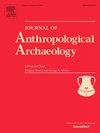迁移考古学中解释性二进制的替代方法
IF 2.2
1区 社会学
Q1 ANTHROPOLOGY
引用次数: 0
摘要
这个问题批判性地考虑了考古学家在检查移民和散居社区的材料和景观时通常依赖的二元假设。这些假设通常涉及寻找与移民相关的物质文化与当地/东道国物质文化,以及寻找与移民相关的物质文化中的变化与连续性。虽然这些研究移民背景的方法长期以来在考古学中被批评为既不准确又与政治偏见有关,但它们在实践中仍然存在。通过本期提出的七个案例研究,我们考虑了为什么会出现这种情况。为什么在不使用与身份和身份建构相关的分类思维的情况下,从考古学角度“观察”移民如此具有挑战性?本问题的每位撰稿人都强调了不同移民群体面临的背景挑战,并就如何通过材料记录解读应对策略提供了不同的答案和解决方案。有些人试图去中心化身份范畴,将其作为所有迁移考古学考虑的理论切入点。其他人认为身份是社区如何看待自己的核心,但试图强调对这些类别的理解是多方面的,不断变化的,有争议的,和/或位于复杂的生态和物质世界中的方式。最终,作为一个集合,我们认为这些案例研究说明了移民背景的巨大讽刺:移民揭示了空间文化联系是可塑的,同时也突出了空间文化联系的政治重要性和影响。因此,在移民背景下工作的考古学家必须努力挑战人们对民族区域类别和文化领土的认知固定性,同时说明对这些类别和领土的理解在多大程度上塑造了流动人口的福祉和目标。本文章由计算机程序翻译,如有差异,请以英文原文为准。
Alternatives to interpretive binaries in archaeologies of migration
This issue critically considers the binary assumptions archaeologists typically rely on when examining materials and landscapes of migrant and diaspora communities. These assumptions typically involve the search for either migrant associated material culture versus local/host material culture ALSO the search for change versus continuity within migrant associated material cultures. While these ways of approaching migration contexts have long been critiqued in archaeology as both factually inaccurate and associated with political bigotry, they have remained persistent in practice. Speaking across the seven case studies presented in this issue, we consider why this is the case. Why is it so challenging to ‘see’ migration archaeologically without employing categorical thinking related to identity and identity construction? Each contributor to this issue highlights the contextual challenges different migrant groups faced and provides a different answer and solution to how to interpret coping strategies through the material record. Some seek to de-center identity categories as the theoretical entry-point of all archaeological considerations of migration. Others suggest that identity is central to how communities see themselves, but attempt to highlight the ways in which understandings of these categories are multifaceted, ever-in-flux, contended, and/or situated within complex ecological and material worlds. Ultimately, as a collection, we feel that these case studies illustrate the great irony of migration contexts: migration reveals spacio-cultural associations as malleable, while at the same time foregrounding the political import and impact of spaciocultural associations. As such, archaeologists working in contexts of migration must strive to challenge the perceived fixity of ethnoregional categories and cultural territories, while simultaneously illustrating the extent to which understandings of such categories and territories shape the wellbeing and goals of people-on-the-move.
求助全文
通过发布文献求助,成功后即可免费获取论文全文。
去求助
来源期刊

Journal of Anthropological Archaeology
Multiple-
CiteScore
4.00
自引率
11.10%
发文量
64
期刊介绍:
An innovative, international publication, the Journal of Anthropological Archaeology is devoted to the development of theory and, in a broad sense, methodology for the systematic and rigorous understanding of the organization, operation, and evolution of human societies. The discipline served by the journal is characterized by its goals and approach, not by geographical or temporal bounds. The data utilized or treated range from the earliest archaeological evidence for the emergence of human culture to historically documented societies and the contemporary observations of the ethnographer, ethnoarchaeologist, sociologist, or geographer. These subjects appear in the journal as examples of cultural organization, operation, and evolution, not as specific historical phenomena.
 求助内容:
求助内容: 应助结果提醒方式:
应助结果提醒方式:


